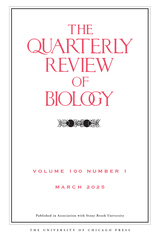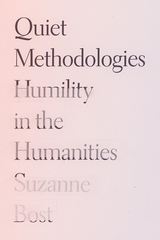
From the first centuries of Christianity, believers turned to the perfection modeled by saints for inspiration, and a tradition of recounting saints’ Lives flourished. The Latin narratives followed specific forms, dramatizing a virgin’s heroic resolve or a martyr’s unwavering faith under torture.
In early medieval England, saints’ Lives were eagerly received and translated into the vernacular. The stories collected here by unknown authors are preserved in manuscripts dating from the eleventh and twelfth centuries. They include locally venerated saints like the abbess Seaxburh, as well as universally familiar ones like Nicholas and Michael the Archangel, and are set everywhere from Antioch to Rome, from India to Ephesus. These Lives also explore such topics as the obligations of rulers, marriage and gender roles, private and public devotion, the environment, education, and the sweep of human history. This volume presents new Old English editions and modern English translations of twenty-two unattributed saints’ Lives.

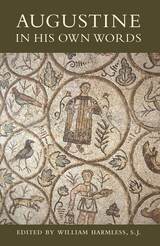
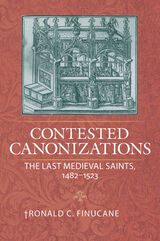
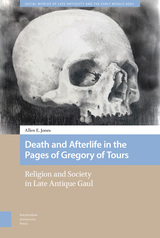
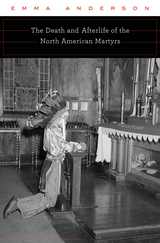
In the 1640s--a decade of epidemic and warfare across colonial North America--eight Jesuit missionaries met their deaths at the hands of native antagonists. With their collective canonization in 1930, these men, known to the devout as the North American martyrs, would become the continent's first official Catholic saints. In The Death and Afterlife of the North American Martyrs, Emma Anderson untangles the complexities of these seminal acts of violence and their ever-changing legacy across the centuries. While exploring how Jesuit missionaries perceived their terrifying final hours, the work also seeks to comprehend the motivations of the those who confronted them from the other side of the axe, musket, or caldron of boiling water, and to illuminate the experiences of those native Catholics who, though they died alongside their missionary mentors, have yet to receive comparable recognition as martyrs by the Catholic Church.
In tracing the creation and evolution of the cult of the martyrs across the centuries, Anderson reveals the ways in which both believers and detractors have honored and preserved the memory of the martyrs in this "afterlife," and how their powerful story has been continually reinterpreted in the collective imagination over the centuries. As rival shrines rose to honor the martyrs on either side of the U.S.-Canadian border, these figures would both unite and deeply divide natives and non-natives, francophones and anglophones, Protestants and Catholics, Canadians and Americans, forging a legacy as controversial as it has been enduring.

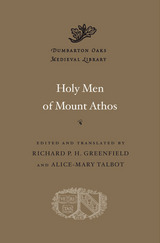
Often simply called the Holy Mountain, Mount Athos was the most famous center of Byzantine monasticism and remains the spiritual heart of the Orthodox Church today. This volume presents the Lives of Euthymios the Younger, Athanasios of Athos, Maximos the Hutburner, Niphon of Athos, and Philotheos. These five holy men lived on Mount Athos at different times from its early years as a monastic locale in the ninth century to the last decades of the Byzantine period in the early fifteenth century. All five were celebrated for asceticism, clairvoyance, and, in most cases, the ability to perform miracles; Euthymios and Athanasios were also famed as founders of monasteries.
Holy Men of Mount Athos illuminates both the history and the varieties of monastic practice on Athos, individually by hermits as well as communally in large monasteries. The Lives also demonstrate the diversity of hagiographic composition and provide important glimpses of Byzantine social and political history.
All the Lives in this volume are presented for the first time in English translation, together with authoritative editions of their Greek texts.



An authoritative new Greek edition and English translation of the life of a notable Byzantine monastic leader.
Saint Peter of Atroa (773–837 CE) was a Byzantine monastic leader, remembered primarily as cofounder and abbot of the influential monastery of Saint Zachariah at Atroa, below the holy mountain of Olympos in Bithynia. Peter sought to live in tranquility and solitude, traveling to the various monasteries he established in northwestern Asia Minor and occasionally joining other notable monastic figures. However, his resistance to the Iconoclast policies of imperial regimes in Constantinople during the first half of the ninth century led to his persecution and the temporary dispersal of his communities. Although he was evidently regarded with suspicion by some of his contemporaries, he gained a reputation as a miracle worker and his tomb became the site of a healing cult in the years after his death.
The Life of Saint Peter of Atroa was written by the saint’s disciple Sabas, also the biographer for Peter’s contemporary and friend Saint Ioannikios, and it survives in two manuscript versions. This volume represents an entirely new edition of the Greek text, establishing the version previously regarded as secondary as the more important of the two, and making the Life accessible to English readers for the first time.
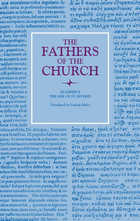

Prostitute, apostle, evangelist—the conversion of Mary Magdalene from sinner to saint is one of the Christian tradition’s most compelling stories, and one of the most controversial. The identity of the woman—or, more likely, women—represented by this iconic figure has been the subject of dispute since the Church’s earliest days. Much less appreciated is the critical role the Magdalene played in remaking modern Christianity.
In a vivid recreation of the Catholic and Protestant cultures that emerged in the sixteenth and seventeenth centuries, The Magdalene in the Reformation reveals that the Magdalene inspired a devoted following among those eager to find new ways to relate to God and the Church. In popular piety, liturgy, and preaching, as well as in education and the arts, the Magdalene tradition provided both Catholics and Protestants with the flexibility to address the growing need for reform. Margaret Arnold shows that as the medieval separation between clergy and laity weakened, the Magdalene represented a new kind of discipleship for men and women and offered alternative paths for practicing a Christian life.
Where many have seen two separate religious groups with conflicting preoccupations, Arnold sees Christians who were often engaged in a common dialogue about vocation, framed by the life of Mary Magdalene. Arnold disproves the idea that Protestants removed saints from their theology and teaching under reform. Rather, devotion to Mary Magdalene laid the foundation within Protestantism for the public ministry of women.

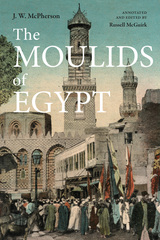
First published in Cairo during World War II, The Moulids of Egypt is a study of moulids, the popular Egyptian religious festivals celebrated by both Muslims and Christians in the first half of the twentieth century. The book talks in detail about the secular side of moulids, where sports, games, theatres, dancing, and laughter were as much part of the festivals as the religious processions and the whirling of dervishes. Some of the rites and customs analyzed here date from as far back as the Pharaonic period, but the moulids are gradually dying out; many of the 126 festivals described in Moulids of Egypt have since faded away, making the book of lasting interest.



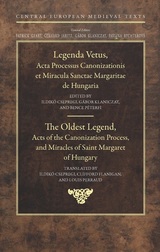
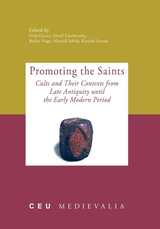
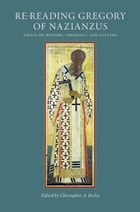
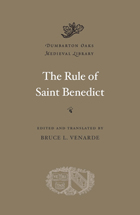
One of the most influential texts in the Middle Ages, The Rule of Saint Benedict offers guidance about both the spiritual and organizational dimensions, from the loftiest to the lowliest, of monastic life. This new Latin-English edition has features of interest for first-time readers of the Rule as well as for scholars of medieval history and language.
The Latin text is a transcription of manuscript 914 of the Abbey of St. Gall (Switzerland), an early ninth-century copy regarded as the version that most closely reproduces Benedict's style. The saint’s idiom was informal, sometimes conversational, and heavily influenced by the spoken Latin of the sixth century CE. In the Rule his voice and thought processes come through in all their strength and humanity. Readers will find background to the monastic life in the notes. This volume also includes texts and translations of two letters that explain the origins of the St. Gall version as well as an index to all the translated materials.
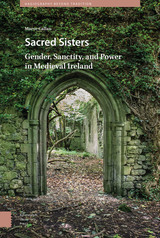
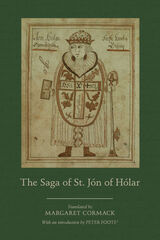
This volume contains a translation of the version of the Saga of St. Jón of Hólar that is probably closest to the first Latin vita. It is only the second saga of an Icelandic episcopal saint to appear in a modern translation in the present century. The volume consists of two parts, the first comprising a general introduction and a translation by Margaret Cormack. The second part provides a detailed scholarly analysis of the manuscripts, contents, style, and literary connections of the saga by the late Peter Foote, one of the foremost scholars of Old Norse and Icelandic literature.
The Jóns saga was written in the early thirteenth century, nearly a century after the death of its protagonist, the first bishop of the diocese of Hólar in Northern Iceland. The author of the saga combined Latin learning with native folklore to produce a readable narrative that is contemporary with the earliest family and contemporary sagas. This text provides valuable insight into the religious life of ordinary Icelanders in the thirteenth century, and the introduction corrects common misconceptions about ecclesiastical history and the cult of saints in Iceland. It will be of value to scholars of medieval Icelandic literature, hagiography, and history.
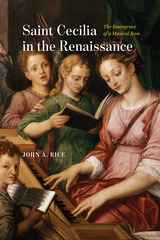
Until the fifteenth century, Saint Cecilia was not connected with music. She was perceived as one of many virgin martyrs, with no obvious musical skills or interests. During the next two centuries, however, she inspired many musical works written in her honor and a vast number of paintings that depicted her singing or playing an instrument.
In this book, John A. Rice argues that Cecilia’s association with music came about in several stages, involving Christian liturgy, visual arts, and music. It was fostered by interactions between artists, musicians, and their patrons and the transfer of visual and musical traditions from northern Europe to Italy. Saint Cecilia in the Renaissance explores the cult of the saint in Medieval times and through the sixteenth century when musicians’ guilds in the Low Countries and France first chose Cecilia as their patron. The book then turns to music and the explosion of polyphonic vocal works written in Cecilia’s honor by some of the most celebrated composers in Europe. Finally, the book examines the wealth of visual representations of Cecilia especially during the Italian Renaissance, among which Raphael’s 1515 painting, The Ecstasy of Saint Cecilia, is but the most famous example. Thoroughly researched and beautifully illustrated in color, Saint Cecilia in the Renaissance is the definitive portrait of Saint Cecilia as a figure of musical and artistic inspiration.
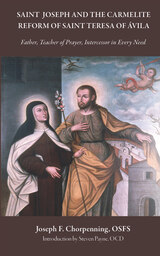
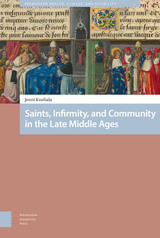


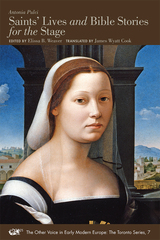
—Sharon Strocchia
Professor of History, Emory University

Saints of Ninth- and Tenth-Century Greece collects funeral orations, encomia, and narrative hagiography. Together, these works illuminate one of the most obscure periods of Greek history—when holy men played central roles as the Byzantine administration reimposed control on southern and central Greece in the wake of Avar, Slavic, and Arab attacks and the collapse of the late Roman Empire. The bishops of the region provided much-needed leadership and institutional stability, while ascetics established hermitages and faced invaders. The Lives gathered here include accounts of Peter of Argos, which offers insight into episcopal authority in medieval Greece, and Theodore of Kythera, an important source for the history of piracy in the Aegean Sea.
This volume, which illustrates the literary variety of saints’ Lives, presents Byzantine Greek texts written by locals in the provinces and translated here into English for the first time.


The latest title in the Central European Medieval Texts series contains the lives of saints who were canonized in the eleventh through thirteenth centuries in the newly Christianized countries of Central and Eastern Europe (Bohemia, Poland, Hungary, and Dalmatia). A rejoinder to the earlier volume in the series, the Saints of the Christianization Age of Central Europe (CEMT, Vol. 6), containing hermits, missionaries, and martyrs, this second volume of hagiography is dominated by political or ecclesiastical leaders who became saintly patrons of their region and were highly venerated throughout the Middle Ages.
The legends in the volume present the two Hungarian holy kings Stephen and Ladislas, the holy duke Emeric, the Czech holy abbot Prokop of Sázava, three bishops, the Venetian-Hungarian Gellért of Csanád, the Polish Stanislas of Cracow (both martyrs), and the Dalmatian holy bishop Saint John of Trogir. Each “vita” is published in Latin original with an English translation and with prefaces discussing the textual tradition.
Saints’ lives have been recognized as an invaluable source of information on social and economic history, the history of mentalities and everyday life, cultural history, and, above all, as a special genre with crucial importance and prevalence in medieval literature.
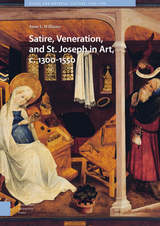

Published to coincide with the 700-year anniversary of her death, Busse-Wilson’s study caused a storm of controversy. Translated for the first time into English, this book reintroduces to a contemporary audience this long-forgotten but still provocative and timely classic.
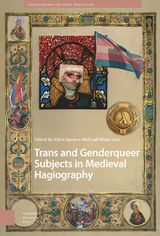
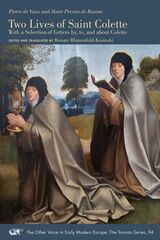
Saint Colette of Corbie (1381–1447) was a French reformer of the Franciscan Order and the founder of seventeen convents. Though of humble origin, she attracted the support of powerful patrons and important Church officials. The two biographies translated here were authored by Pierre de Vaux, her confessor and mentor, and Perrine de Baume, a nun who for decades was Colette’s companion and confidant. Both accounts offer fascinating portraits of the saint as a pious ascetic assailed by demons and performing miracles, as well as in her role as skillful administrator and caring mother of her nuns. This is the first English translation of two biographies in Middle French of the most important female figures of the Middle Ages.
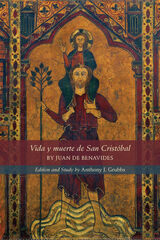
As the patron of travelers, Saint Christopher inspired one of the most popular cults in the medieval era, which spread across Europe and especially the Iberian Peninsula. Artistic renderings of the saint were found near the doors of most Spanish Gothic churches, and paratheatrical representations of Saint Christopher were also commonplace in religious processions. His conversion and martyrdom were often staged between the fifteenth and early eighteenth centuries.
In the theater, Juan de Benavides’s Vida y muerte de San Cristóbal is one of two known comedias dealing with the saint, but it was heavily censored after its premiere. The immense popularity of St. Christopher and other primitive saints first drew the attention of the Council of Trent in the mid-1500s, when the Catholic Church attempted to suppress the influence of the earlier saints due to their fantastical nature. The stories of these saints were censored, rewritten or even omitted in the post-Tridentine martyrologies. This publication is the first critical edition of the only extant copy of Benavides’s playscript. The circumstances surrounding Benavides’s play continue a dialogue about such important topics as censorship and the influence of the church over artistic production.

READERS
Browse our collection.
PUBLISHERS
See BiblioVault's publisher services.
STUDENT SERVICES
Files for college accessibility offices.
UChicago Accessibility Resources
home | accessibility | search | about | contact us
BiblioVault ® 2001 - 2025
The University of Chicago Press



